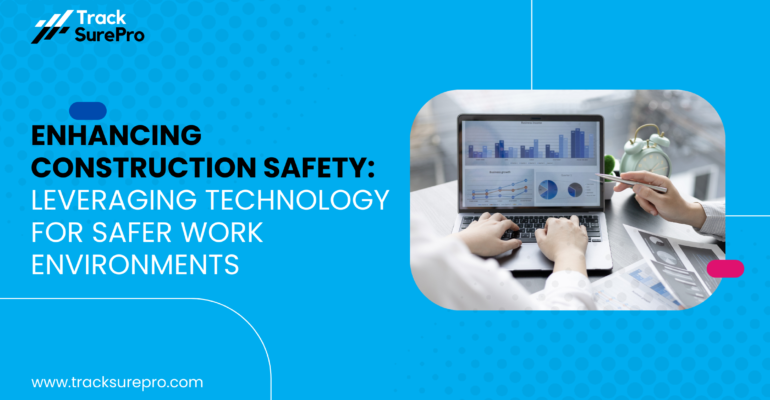Enhancing Construction Safety: Leveraging Technology for Safer Work Environments

Enhancing Construction Safety: Leveraging Technology for Safer Work Environments
Introduction:
Safety is paramount in the construction industry, where workers face numerous hazards daily. While traditional safety practices have played a crucial role in minimizing risks, advancements in technology are now revolutionizing safety management on construction sites. In this blog post, we explore how technology can enhance construction safety, offering insights into innovative tools and solutions that promote safer work environments.
- Wearable Technology for Real-Time Monitoring:
- Wearable technology, such as smart helmets, vests, and wristbands, provides real-time monitoring of workers’ vital signs and environmental conditions. These devices can detect potential hazards, such as elevated temperatures, hazardous gases, or excessive noise levels, and alert workers and supervisors immediately. By monitoring key safety metrics in real-time, wearable technology helps prevent accidents and ensures prompt intervention in emergencies, significantly enhancing construction site safety.
- Drone Surveillance for Site Inspections:
- Drones have emerged as valuable tools for conducting site inspections and surveys in the construction industry. Equipped with high-resolution cameras and sensors, drones can capture detailed aerial imagery of construction sites, allowing supervisors to identify potential safety hazards, monitor progress, and assess site conditions from a safe distance. By providing a bird’s-eye view of the worksite, drones improve situational awareness and enable proactive risk management, ultimately enhancing construction safety and efficiency.
- Virtual Reality (VR) and Augmented Reality (AR) Training:
- Virtual Reality (VR) and Augmented Reality (AR) technologies offer immersive training experiences for construction workers, allowing them to practice safety procedures and protocols in realistic simulated environments. VR and AR training modules can simulate hazardous scenarios, such as working at heights or operating heavy machinery, enabling workers to develop essential safety skills and decision-making abilities without exposing them to actual risks. By enhancing safety training effectiveness and engagement, VR and AR technologies contribute to a safer construction workforce.
- IoT Sensors for Equipment Monitoring:
- The Internet of Things (IoT) sensors are increasingly being used to monitor the condition and performance of equipment and machinery on construction sites. These sensors collect data on factors such as temperature, pressure, vibration, and usage patterns, providing valuable insights into equipment health and potential maintenance needs. By leveraging IoT sensor data, construction companies can implement predictive maintenance strategies, identify potential equipment failures before they occur, and ensure the safe and reliable operation of machinery, reducing downtime and minimizing safety risks.
- Mobile Apps for Safety Reporting and Communication:
- Mobile apps designed specifically for construction safety enable workers to report hazards, incidents, and near misses instantly from their smartphones or tablets. These apps often include features such as incident reporting forms, safety checklists, and communication tools for sharing safety alerts and updates in real-time. By empowering workers to report safety concerns quickly and easily, mobile safety apps promote a culture of safety awareness and responsiveness, facilitating prompt corrective actions and preventing accidents on construction sites.
- Remote Monitoring and Control Systems:
- Remote monitoring and control systems allow supervisors to oversee construction activities and safety measures remotely, providing real-time visibility and control over worksite operations. These systems can remotely monitor equipment performance, access control, and environmental conditions, enabling supervisors to intervene immediately in case of safety violations or emergencies. By enabling proactive safety management and rapid response to incidents, remote monitoring and control systems contribute to safer and more efficient construction projects.
Conclusion:
Tracksurepro has become a powerful ally in the quest to enhance construction safety, offering innovative solutions that enable proactive risk management, improve safety training effectiveness, and empower workers and supervisors with real-time insights and control. By leveraging wearable technology, drones, VR/AR training, IoT sensors, mobile safety apps, and remote monitoring systems, construction companies can create safer work environments, prevent accidents, and protect the well-being of their workers. Through continuous innovation and adoption of advanced safety technologies, the construction industry can pave the way for a safer and more sustainable future.

